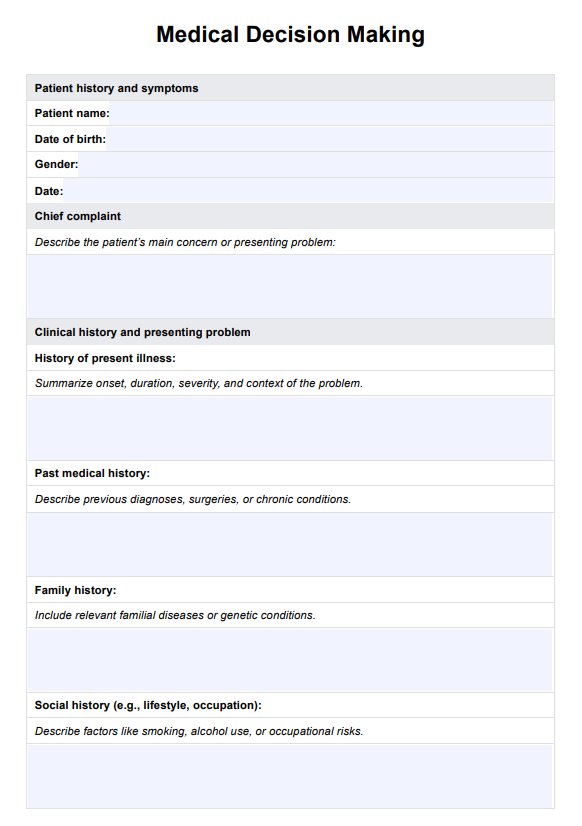Medical decision making is the process clinicians use to evaluate a patient's history, current symptoms, diagnostic test results, and physical exam findings to develop a treatment plan. It involves assessing risks, forming differential diagnoses, and determining the best course of action for the patient’s condition. This is particularly critical in cases involving chronic illness, acute illness, or problems with uncertain prognosis.

Medical Decision Making Template
Explore the Medical Decision Making Template, a tool designed for clinicians to streamline documentation, improve accuracy, and simplify E/M coding. Learn more today!
Medical Decision Making Template Template
Commonly asked questions
During a patient encounter, medical decision making is documented by recording the patient’s medical record, including the presenting problem, exam findings, lab tests, and management options. Key components include the chief complaint, problems addressed, treatment plans, and any data reviewed or analyzed. This documentation ensures clear communication and supports effective patient care.
Accurate documentation ensures high-quality medical care, supports E/M coding, and provides a comprehensive record for future care. It protects against legal risks and facilitates patient management, especially in high-risk or complex cases like acute exacerbation, systemic symptoms, or terminally ill patients. Proper documentation also aids in tracking significant changes and planning follow-up care.
EHR and practice management software
Get started for free
*No credit card required
Free
$0/usd
Unlimited clients
Telehealth
1GB of storage
Client portal text
Automated billing and online payments











